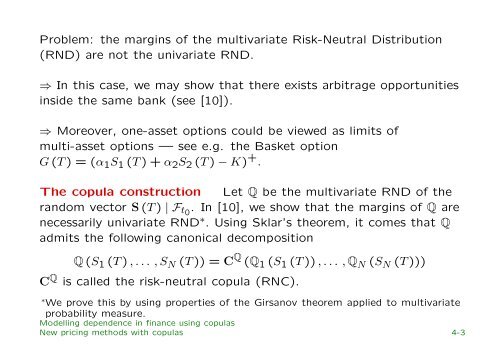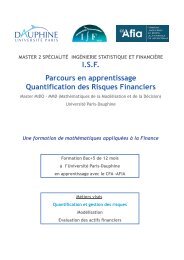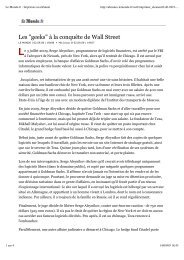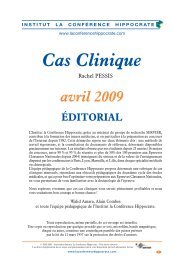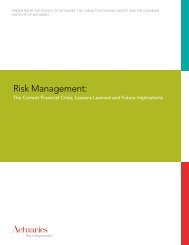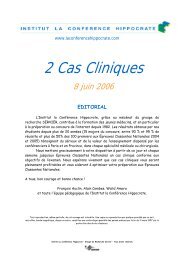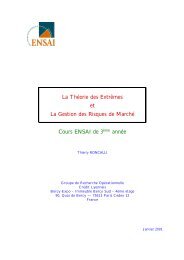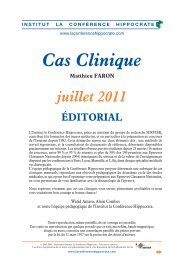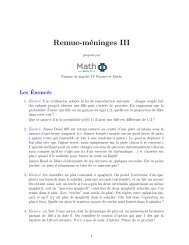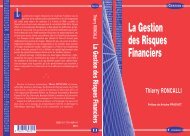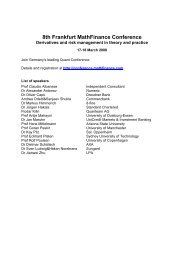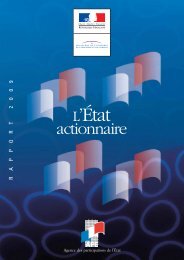Modelling dependence in finance using copulas - Thierry Roncalli's ...
Modelling dependence in finance using copulas - Thierry Roncalli's ...
Modelling dependence in finance using copulas - Thierry Roncalli's ...
You also want an ePaper? Increase the reach of your titles
YUMPU automatically turns print PDFs into web optimized ePapers that Google loves.
Problem: the marg<strong>in</strong>s of the multivariate Risk-Neutral Distribution<br />
(RND) are not the univariate RND.<br />
⇒ In this case, we may show that there exists arbitrage opportunities<br />
<strong>in</strong>side the same bank (see [10]).<br />
⇒ Moreover, one-asset options could be viewed as limits of<br />
multi-asset options — see e.g. the Basket option<br />
G (T ) = (α 1 S 1 (T ) + α 2 S 2 (T ) − K) + .<br />
The copula construction Let Q be the multivariate RND of the<br />
random vector S (T ) | F t0 . In [10], we show that the marg<strong>in</strong>s of Q are<br />
necessarily univariate RND ∗ . Us<strong>in</strong>g Sklar’s theorem, it comes that Q<br />
admits the follow<strong>in</strong>g canonical decomposition<br />
Q (S 1 (T ) , . . . , S N (T )) = C Q (Q 1 (S 1 (T )) , . . . , Q N (S N (T )))<br />
C Q is called the risk-neutral copula (RNC).<br />
∗ We prove this by us<strong>in</strong>g properties of the Girsanov theorem applied to multivariate<br />
probability measure.<br />
<strong>Modell<strong>in</strong>g</strong> <strong>dependence</strong> <strong>in</strong> f<strong>in</strong>ance us<strong>in</strong>g <strong>copulas</strong><br />
New pric<strong>in</strong>g methods with <strong>copulas</strong> 4-3


